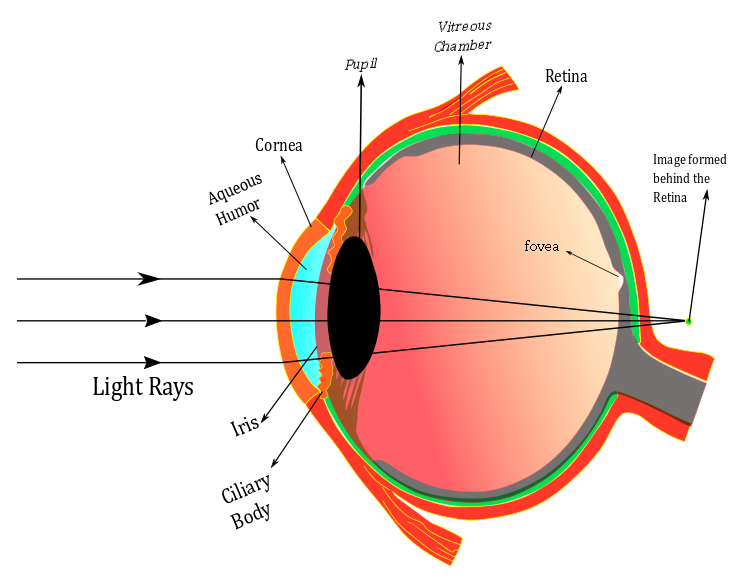REFRACTIVE ERROR; HYPERMETROPIA A.K.A FARSIGHTEDNESS

By EyesDisorder .com-, CC BY 2.0, HYPERMETROPIA a.k.a farsight
It can affect both children and adults.
A study showed that newborns are almost always Hypermetropic, but it gradually decreases as the child gets older.
It is less common compared to myopia.
Farsightedness can be classified into;
- Latent- overcome by normal tone of ciliary muscle. It can only be detected when Ciliary muscle is paralysed by atropine.
- Manifest- detected without paralysing the Ciliary muscle. It can further be classified into;
a. Facultative- which can be overcome by an effort of accommodation.
b. Absolute- which cannot be overcome by an effort of accommodation.
There are many causes for this condition. It may occur when the axial length of the eyeball is too short or if the lens or cornea is flatter than normal. Changes in refractive index of lens, alterations in position of the lens or absence of the lens are the other causes. Risk factors include a family history of diabetes, certain medications and tumors around the eye.
Complications such as accommodative dysfunction, binocular dysfunction, amblyopia, strabismus could arise.
They can present in various ways, which includes blurring of vision for near work, frontal headache and eye strain (i.e Asthenopia), burning and dryness in the eyes, presbyopia in adults at an early age.
These symptoms are usually noticed specially in the evening after close work.
On examination by a specialist, accommodative convergent squint may be noticed, and a typical small eye as a whole, which is prone to cause closed angle glaucoma. Examination of the fundus may show no abnormality, a bright reflex i.e watered silk appearance, pseudo-papillitis i.e hyperaemic disc with blurred margin which is similar to papillitis (inflammation of the optic nerve head).
By Гуменюк И.С. - Own work, CC BY-SA 4.0, wikimedia commons
It is treated by prescribing suitable correcting spherical convex lenses.
This will be all for refractive errors.


That's a nice and educative post. Refractive errors are common eye problems that everyone need to know of. Thanks alot for sharing .
You are welcome
Thanks for the post! Hypermetropia is a pain in the ass

!1UP
You are welcome. It is indeed.
You have received a 1UP from @gwajnberg!
@stem-curator
And they will bring !PIZZA 🍕.
Learn more about our delegation service to earn daily rewards. Join the Cartel on Discord.